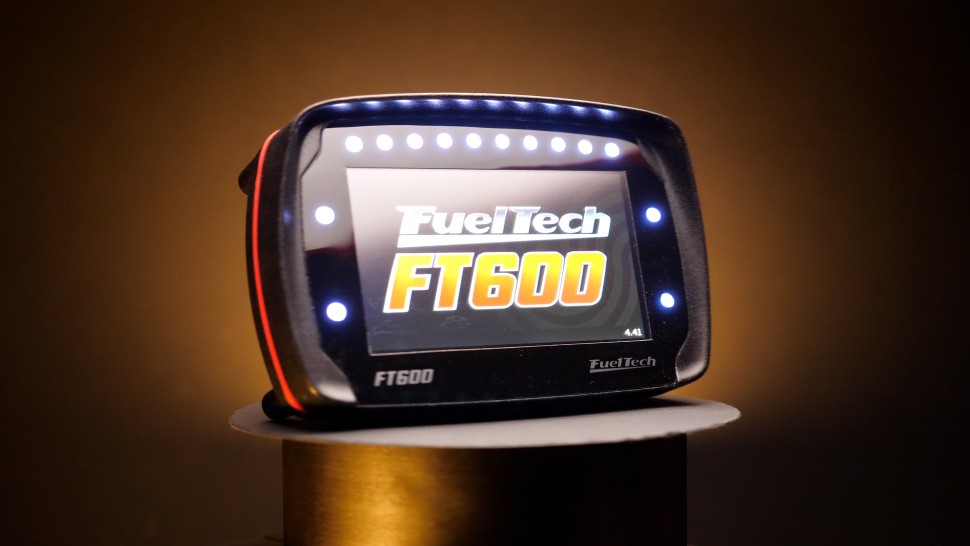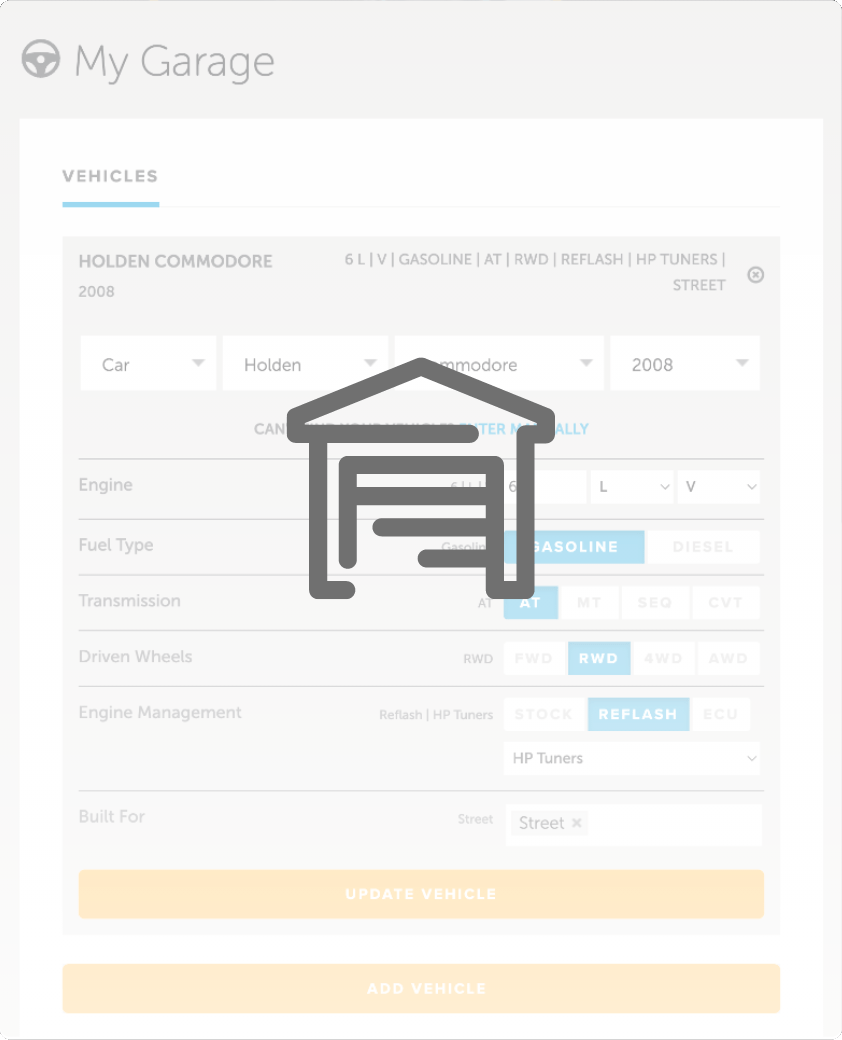| 00:00 |
Coastdown testing is one of the simplest error tests we can do without any instrumentation that can still give us helpful error numbers.
|
| 00:08 |
It involves taking the car up to speed, clutching it in and then seeing how the speed decreases with time and distance in order to calculate the drag coefficient on a car.
|
| 00:18 |
All we need for this test is a car, a decent length straight and a speed logging system, which can be as simple as a phone-based GPS logger.
|
| 00:27 |
For a good quality coastdown we want to ideally have at least 200 metres of coasting.
|
| 00:32 |
It's important to start by first working out what speed we can consistently hold before entering the coasting zone.
|
| 00:41 |
If we want to do multiple coastdowns we need to have a period where we can control constant speed before entering the zone so the coasting speeds are more comparable.
|
| 00:50 |
A few laps onto the straight with 200-300 metres of coast before the braking zone will give us an idea of what marker to try and hold our speed from.
|
| 01:01 |
In this example using data taken from Highlands Motorsport Park in New Zealand, I'm going to get the driver to try to hold the speed constant from the start finish line for about 100 metres so that we can always start the coast at a braking marker on track.
|
| 01:16 |
Looking at this data trace we can see the speed and throttle inputs of the driver as they try to hold the speed near the target before initiating the coast.
|
| 01:25 |
Having a period of constant speed means that even if the driver makes an error coming out of the turn, they still have time to settle the car and ensure the speed is similar between the runs.
|
| 01:36 |
This is even better if our car can have an ECU based speed limiter triggered, so then the driver doesn't even need to think about speed before coasting.
|
| 01:44 |
Having consistent cues will help with the driver's ability to pull off a good coast down.
|
| 01:50 |
So, in my example I've got two coast downs, one is with one rear wing setting and one is with another, both giving different drag levels.
|
| 01:59 |
In each test what we want the driver to do is to hold a constant speed, in this case approximately 180 kmph, and then kick the clutch in at the marker to initiate the coast.
|
| 02:11 |
Our driver here is an amateur and the car has no speed limiter, so this is the hardest case we'll have to deal with for coast downs.
|
| 02:18 |
We can see this in the fact that even though the driver has tried to enter the coast down with identical speed, there's still a difference of about 4.5 kmph at the start of the coasting.
|
| 02:29 |
If we overlay the data here, we can just see that the coloured arrow setup has a slightly steeper slope than the grey.
|
| 02:36 |
It's this slope that we're interested in as the rate of deceleration or rate of speed loss is what will tell us the drag value.
|
| 02:44 |
There's also another thing to consider here in that the driver needs to clutch in.
|
| 02:49 |
Just lifting won't work as the engine braking effect is far too strong.
|
| 02:53 |
Leaving the engine engaged with the driveline makes it difficult to gauge the effect on aero, and this effect only becomes worse at lower speeds.
|
| 03:03 |
Before we can compute numbers, we need to work out the rolling resistance of our car and specifically the resistance on the surface we are doing our coast down test on.
|
| 03:12 |
We can do this by carrying out a low speed coast down test on it, taking the car along the stretch at say 50 kmph and then clutching it in and recording the results.
|
| 03:23 |
The aero drag is much less at this point and the rolling resistance will dominate more.
|
| 03:28 |
This is because aerodynamic forces increase with speed, but rolling resistance is near constant.
|
| 03:35 |
Obviously, we need to be safe when we're doing this as we're going to be going very slowly, so if other cars are around, wait until the end of session to pull this off so that we don't cause a collision.
|
| 03:45 |
Now, that we have this data, we can work out our drag numbers.
|
| 03:49 |
Firstly, looking at the low speed test, we can start by estimating the drag coefficient.
|
| 03:54 |
Some good places to start for a road car are around SCX 0.6, whereas a lightly modified track car should be SCX 0.8 and a more heavily modified track car with a decent sized wing, 1.1.
|
| 04:08 |
Moving up, for a time attack open class car, starting at 1.5 makes sense and for a pro class car, 1.8 is a good starting point.
|
| 04:17 |
At lower speeds, the drag matters less, so if we're in the ballpark, we'll be ok.
|
| 04:23 |
Our low speed run drops 32.5 kmph or 9.03 mps over a time of 35.5 seconds.
|
| 04:32 |
This gives us a deceleration of 0.254 m per second squared.
|
| 04:38 |
The relationship between force and acceleration, or deceleration on the car, is given by force equals mass times acceleration, F equals ma.
|
| 04:49 |
A deceleration is just an acceleration of the car in a negative direction, so acceleration and deceleration are somewhat interchangeable terms in this context.
|
| 04:59 |
So, the mass of this car on track is 1330 kg, and deceleration from before is 0.254 m per second squared.
|
| 05:08 |
This gives us a force of 337 N, slowing the car down.
|
| 05:13 |
Of course, some of that is the error contribution, so to calculate that we take our average speed over the slowdown and calculate the drag forces.
|
| 05:22 |
The average speed assumption isn't quite true as the downforce is related to speed squared and not just the speed, but it gets us within 1% of the answer we're after and is much simpler.
|
| 05:34 |
So, if we assume on this car that our SCX is around 0.8, based on the numbers I mentioned before, then we find our error force at our average speed of 32.85 kmph is 51 N.
|
| 05:48 |
This means that the rolling resistance is our total force from before of 337 N minus our error force of 51 N, giving us a final rolling resistance of 286 N.
|
| 06:00 |
Using this rolling resistance value on our coloured line of log data, on this coast down, the coast begins when the car is settled, which is about 176 kmph, and goes for 5.298 seconds, until the brakes are applied at 157.6 kmph.
|
| 06:20 |
This means that our speed has dropped 18.4 kmph, or 5.111 m per second in a period of 5.298 seconds.
|
| 06:30 |
The acceleration from this is therefore 0 .965 m per second squared, which gives a decelerating force of 1283 N.
|
| 06:41 |
Subtracting the rolling resistance of 286 N gives an aerodynamic average resistance of 997 N.
|
| 06:50 |
Again, the error force is changing this whole time as the force isn't linear with speed.
|
| 06:55 |
So this averaging and linearization isn't technically correct, but it works well as the variance between the start and end speeds isn't that great in the context of the overall speed, and as a result it still gets us very, very close to the right numbers.
|
| 07:10 |
Taking the average speed of the coast down at 168.8 kmph and back calculating the drag coefficient from that speed and the average force gives us an SCX of 0.759.
|
| 07:23 |
If we go and perform the same calculations on the grey run, with a start speed of 171 .6 and an end speed of 154.2 over a time of 5.366 seconds, we get an SCX of 0.727.
|
| 07:38 |
Now, the key thing about coast down testing is that it's good for testing options and comparing them, but not so great at getting very high accuracy on number comparisons.
|
| 07:48 |
And now I know that for this particular car, the actual drag numbers for the two setups are SCX 0.76 and SCX 0.71.
|
| 07:58 |
I've got the delta in the ballpark, but the absolute accuracy is still a few percent off.
|
| 08:04 |
This was a fairly clean test too, with the car being the only one on track with minimal wind on the day.
|
| 08:10 |
Your testing conditions may be more challenging.
|
| 08:13 |
It's also worth noting that with different aero option testing, it's important to try and do these tests as close to each other as possible to try and get similar atmospheric and wind conditions, and to record the conditions for each run so that we know the air density to use for the calculation.
|
| 08:31 |
Air density and wind changes can have massive effects on our results, which is why coast downs should really be used more for setup deltas than absolute numbers, unless the conditions are perfect.
|
| 08:42 |
Let's summarize what we've covered in this module before moving on.
|
| 08:45 |
Coast down testing is a straightforward method to estimate the vehicle's drag coefficient by measuring how quickly it decelerates when coasting in neutral on a flat straight.
|
| 08:55 |
By recording the initial and final speeds over a set distance and using average forces, rolling resistance and air density data, the drag can be calculated with reasonable accuracy.
|
| 09:06 |
For consistent results, it's essential to start coasts from a stable speed, ensure minimal wind and use similar conditions across multiple tests.
|
| 09:15 |
While it's effective for comparing setups, coast down testing is less precise for absolute drag measurements due to environmental factors like wind and air density variability.
|





